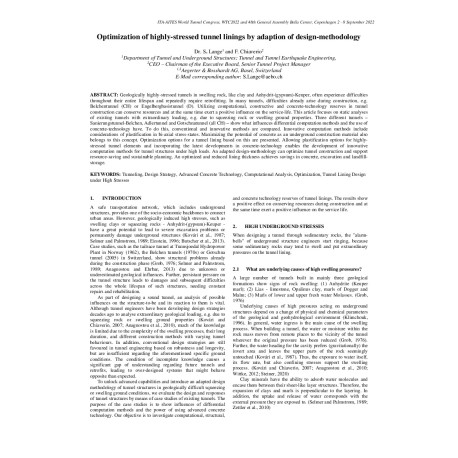Cart
0
0
No document
0,00 €
Total
Document successfully added to your shopping cart
Quantity
Total
There are 0 items in your cart.
There is 1 item in your cart.
Total documents
Total shipping
To be determined
Total
Search & filter
Search for a publication
Search & filter
Optimization of highly-stressed tunnel linings by adaption of design-methodology
Optimization_of_Highly-Stressed_
Geologically highly-stressed tunnels in swelling rock, like clay and Anhydrit-(gypsum)-Keuper, often experience difficulties throughout their entire lifespan and repeatedly require retrofitting. In many tunnels, difficulties already arise during construction, e.g. Belchentunnel (CH) or Engelbergbasistunnel (D). Utilizing computational, constructive and concrete-technology reserves in tunnel construction can conserve resources and at the same time exert a positive influence on the service-life. This article focuses on static analyses of existing tunnels with extraordinary loading, e.g. due to squeezing rock or swelling ground properties. Three different tunnels – Sanierungstunnel-Belchen, Adlertunnel and Gotschnatunnel (all CH) – show what influences differential computation methods and the use of concrete-technology have. To do this, conventional and innovative methods are compared. Innovative computation methods include considerations of plastification in bi-axial stress-states. Maximizing the potential of concrete as an underground construction material also belongs to this concept. Optimization options for a tunnel lining based on this are presented. Allowing plastification options for highlystressed tunnel elements and incorporating the latest developments in concrete-technology enables the development of innovative computation methods for tunnel structures under high loads. An adapted design-methodology can optimize tunnel construction and support resource-saving and sustainable planning. An optimized and reduced lining thickness achieves savings in concrete, excavation and landfillstorage.




